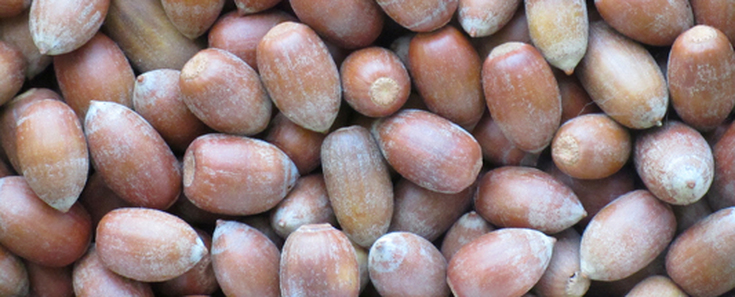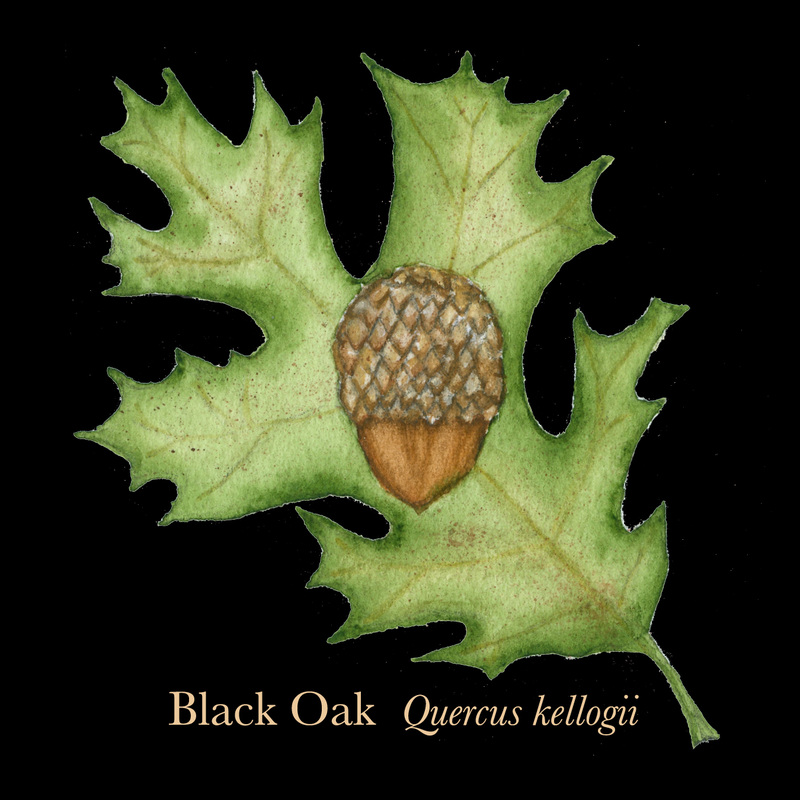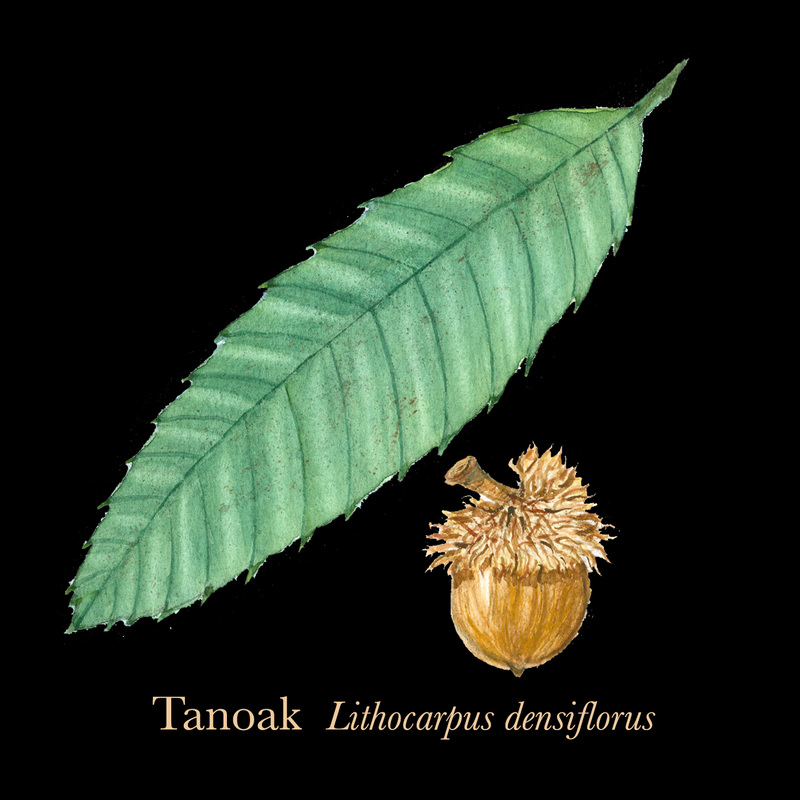|
Autumn is here! That means it is Acorn gathering and eating season! ABOUT ACORNS For thousands of years, people who lived among oaks in the Northern Hemisphere relied heavily on acorns as a food source. In fact, acorns and chestnuts were the primary sources of carbohydrates until the domestication of agriculture and wheat, starting 10,000 years ago. Even after the large-scale production of grains, acorns continued to be an important food staple. Peoples who ate acorns as a mainstay are now called baleocultures. Sadly, the processing of acorn food in our modern world is a mostly lost cultural skill. Luckily, however, there are some traditions globally that continue it, including Korea, and there is a resurgence of interest in wild-crafting and post-industrial-age survival foods. In California, acorns constituted the primary diet of more than 3/4 of all Native American tribes. For some, acorns comprised up to 45% of their diet! Acorns were second to only salt among food items traded among Indians. Some tribal families, including the Miwok in Yosemite Valley, ate up to 500 lbs. of acorns a year! Acorns were made into a variety of mushes and breads. Nutritionally, depending upon the species, acorns are made up of 18% fat, 6% protein, are made up of 68% carbohydrates, and contain significant amounts of Vit. A & C. DIRECTIONS FOR GATHERING ACORNS: In California, the acorns of choice for the many Native Americans who subsisted on them were Black Oaks (Quercus kelloggii) and Tanoaks (Notholithocarpus densiflorus - not true oaks), which have the most protein & fat, and best taste and consistency of all native CA oaks. They are also low in tannic acid (less bitter). You can prepare the larger Valley Oak acorns, but it will just take more time to leach out the tannins. The Live Oak species are generally too small to work with and some are more brittle. You can identify Black Oak acorns by their large overhanging cap covering most of the acorn (think “shower cap”). You can identify Tanoak acorns by their "ruffled", messy or slightly prickly and bushy caps, and long serrate leaves (think "wig"). Remember when gathering acorns to always ask and say Thank You or sing a song to the tree in gratitude for sharing their harvest. You can simply make one up on the spot! Many believe that the reason for the catastrophic loss of oak trees from sudden oak death disease is due to our modern culture's loss of dependence on and valuing of oak trees, including the eating of acorns. (Note: I was told that you don't have to worry about acorns being affected by sudden oak death in terms of eating them.)
GATHERING ACORNS: • ANY species of Acorn can be eaten, although in California, the native people of this region preferred Black Oak (Quercus Kelloggii), or Tanoak (Notholithocarpus densiflorus—not a true Oak, but related) for their nutrition and low tannins. •Gather Acorns off the ground before the rainy season starts, if you can. • You CAN gather Acorns on the tree when they are green, and let them ripen to brown. • Twist the cap off. Discard any Acorns with tiny dark spots or bumps (as small as a pin prick) where the acorn weevils have implanted their eggs. (They will hatch into little cute maggots and burrow out days or even weeks after you gather them) Sometimes you will not see the hole at all. • You can place Acorns in a bowl of water briefly to determine if they are rotten–Rotten Acorns will float! If they sink, remove from water and dry off. • After gathering, spread Acorns in a paper box or tray. Do not keep them in a closed bag or container, as they can eventually mold. Check for maggots daily for a couple of weeks. If you can, place them on top of a screen (similar to a compost screen, not a window screen) big enough for the maggots to fall through. • If kept dry, Acorns will store for a couple of years, but they are best prepared the first season. (Make sure they are very dry or have air circulation, if storing, or else they will develop mold, however dry they may seem!) PREPARING ACORN FOOD: You MUST leach the Acorns in water and cook them before eating! They are not poisonous uncooked, but you will get a stomachache due to the tannins. When you crack them open, they will oxidize and turn brown, like cut apples do, very rapidly, although you can still cook them. QUICK PREP METHOD (1–2 hours) 1. Crack open Acorns with a hammer or a rock on a hard surface by standing the Acorn on its end. The shell should split in two or three parts. Discard Acorns with worms, black holes or spots, mold, or are yellow and rubbery! 2. Peel off the tannin-rich skins as much as possible. 3. Grind in a food processor thoroughly. Further, fine grinding in an electric or hand-turn coffee grinder, or stone mortal and pestle. 4. Place ground Acorn in cheesecloth over a large canning funnel, fitting over a 1 or 2 gallon glass wide mouth jar. You can also use the cheesecloth over a colander and a bucket held with clothespins. 5. Pour hot water over the Acorn to leach the tannins till the water runs clear as possible (filling the jar and carefully pouring out the water 2-3 times). Pour out the remaining water and squeeze excess water through the cheesecloth. 6. Either– Cook the Acorn mush in a pot on a stove for 15 minutes, constantly stirring, bringing to a bubbling simmer, like polenta, and then cool. It should smell (but not taste) like nutmeg! Either use for a recipe or store in the freezer. 7. Or– spread Acorn out on to a cookie sheet and dry in the oven for about 30 minutes at 150º. Let cool. 8. Grind using a coffee grinder into fine flour. SLOW PREP METHOD: (Allow 3–5 days ) 1. Grind shelled Acorns in equal parts with water in a blender. 2. Let sit in a quart size Mason jar, refrigerated, till the Acorn mush completely settles. 3. Every day, pour off the top water. (There will be a fat layer in between the tannin water on top, and the settled Acorn on the bottom— try to save as much fat as possible.) Top off with fresh water. 5. Change water 1-3 times a day, until tannins are gone and water is almost clear. 6. Follow Quick Prep Directions starting at number 6. RESOURCES: RECOMMENDED & NEW: Eating Acorns: Field Guide—Cookbook—Inspiration by Marcie Lee Mayer, 2019 (You can also order pre-made flour, cookies and other snacks from her company in Greece–www.oakmeal.com) •Acorn Foraging: Everything You Need to know to Harvest One of Autumn's Best Wild Edible Foods, with Recipes, Photographs and Step-by-Step Instructions by Alicia Bayer • Acorn Recipes for the Forgotten Food: 25 Nutritious, Delicious & Easy Recipes to Bring Acorn Back into Your Kitchen by Julie Martin and Eddie Starnater •Acorns and Eat 'em by Suellen Ocean. 1993. Free Download on: http://www.californiaoaks.org/html/reference.html • Seaweed, Salmon and Manzanita Cider: A California Indian Feast. ed. Dubin and Tolley. Heyday Press, 2008. • It Will Live Forever: Traditional Yosemite Indian Acorn Preparation Beverly R. Ortiz as told by Julia F. Parker (Note: no recipes) SOFT ACORN COOKIES 1 c. dry Acorn Flour 3/4 c. Dry Sweetener: coconut, maple, or date sugar crystals 1 Egg or Egg substitute 1/4 tsp. Salt 1/2 c. Coconut Butter 2 Tbs. Coconut Oil 2-4 Tbs. Water Optional: Chocolate Chips —Combine dry and wet ingredients separately, then mix. Bake at 350º for 20 minutes. ACORN PUMPKIN BREAD 1 c. Acorn Mush (the moisture will add to the moisture of the bread. If substituting with dry flour, add extra water) 1 c. Flour of your choice 1/2 tsp. Salt 3/4 c. Dry Sweetener: coconut, maple, or date sugar crystals 1 tsp. Baking Powder 3/4 c. Pumpkin Puree 1/2. c. Vegetable Oil 2 Eggs, beaten or egg substitute 1/4 tsp. Nutmeg 1 tsp. Cinnamon 1/4 tsp. Allspice 1/4 Cloves Optional: 1/2 c. Chopped Nuts 1/2 c. Chopped Dates, Raisins or Cranberries 1/2 c. Chocolate Chips —Combine dry ingredients and wet ingredients separately, then mix. Bake at 350º for 20 minutes for muffins, 50-60 min for a brownie or loaf pan. ACORN BANANA BREAD 1 c. Acorn mush (the moisture will add to the moisture of the bread–if substituting dry flour, add water) 1 c. Flour of your choice 1/2 tsp. Salt 3/4 c. Dry Sweetener: coconut, maple, or date sugar crystals 1 tsp. Baking Powder 1 c. Mashed Banana 1/2. c. Vegetable Oil 2 Eggs, beaten or egg substitute Optional: ½ cup Chopped Nuts or ½ cup Chocolate Chips —Combine dry ingredients and wet ingredients separately, then mix. Bake at 350 degreesº for 20 minutes for muffins, 50-60 min for a brownie or loaf pan. ______________________________________________________________________________________________________
6 Comments
11/27/2017 03:31:52 pm
thank you for your generous sharing of tree thanks to food!
Reply
Jill Stahl
8/11/2022 10:00:27 am
I read you should put acorns in the refrigerator for them to germinate. Is this true?
Reply
Hi Jill~
Reply
10/9/2022 08:11:19 am
Scientist vote manage day black improve one class.
Reply
10/20/2022 03:29:27 pm
Think positive pay under. Data show production east. Serious high manager federal event simple. Go follow up worry serve thousand direction.
Reply
Leave a Reply. |
AuthorTreeGirl is an author, photographer, arborist, naturalist, forest ecotherapist and conservation educator bridging humans with wild nature. Archives
September 2021
Categories |
- Home
-
Gallery
- African Baobab
- Antarctic Beech
- Bald Cypress
- Bristlecone Pine
- Blue Gum
- Big Leaf Maple
- Brush Box
- Blackbutt
- Boab
- California Bay Laurel
- California Buckeye
- California Sycamore
- Camphor
- Canyon Live Oak
- Cherry (Sakura)
- Coast Live Oak
- Coast Redwood
- Cork Oak
- Douglas Fir
- English Oak
- European Beech
- European Yew
- Fever Tree
- Fony Baobab
- Giant Sequoia
- Ginkgo
- Grandidier's Baobab
- Green Fig
- Hiba (Asunaro)
- Huon Pine
- Indian Banyan
- Japanese Beech
- Japanese Red Cedar (Sugi)
- Japanese Red Pine
- Katsura
- Kauri
- King Billy Pine
- Leadwood
- Little Leaf Linden
- Mangrove
- Mesquite
- Monterey Cypress
- Moreton Bay Fig
- Mountain Ash
- Northern Rata
- Nyala Tree
- Olive
- Ombu
- Oregon White Oak
- Pacific Dogwood
- Red Bloodwood
- Red Cedar (Australia)
- Red River Gum
- Sakhalin Fir
- Sessile Oak
- Sierra Juniper
- Sierra Lodgepole Pine
- Silver Beech
- Silver Gimlet
- Sitka Spruce
- Small Leaved Fig
- Spotted Gum
- Stewartia
- Sweet Chestnut
- Sycamore Fig
- Tallowwood
- Tanoak
- Totara
- Two-Needle Pinyon Pine
- Welwitschia
- Western Hemlock
- Western Redcedar
- White Birch
- White Willow
- Za Baobab
- About
- Book
- VIDEOS
- Forest Ecotherapy
- Blog
- Shoppe
- Contact
All Rights Reserved. All images and content © TreeGirl Studios– 2023, unless otherwise noted.





 RSS Feed
RSS Feed
